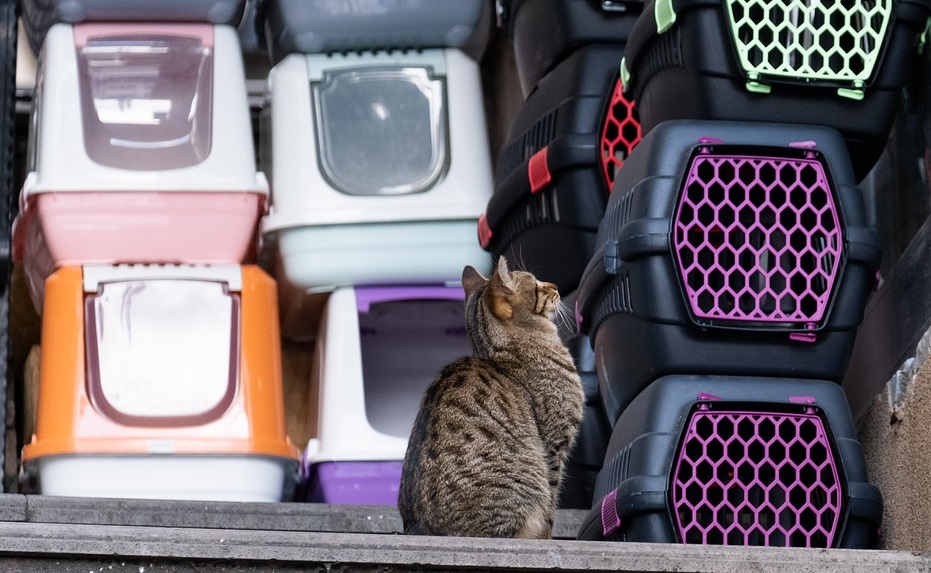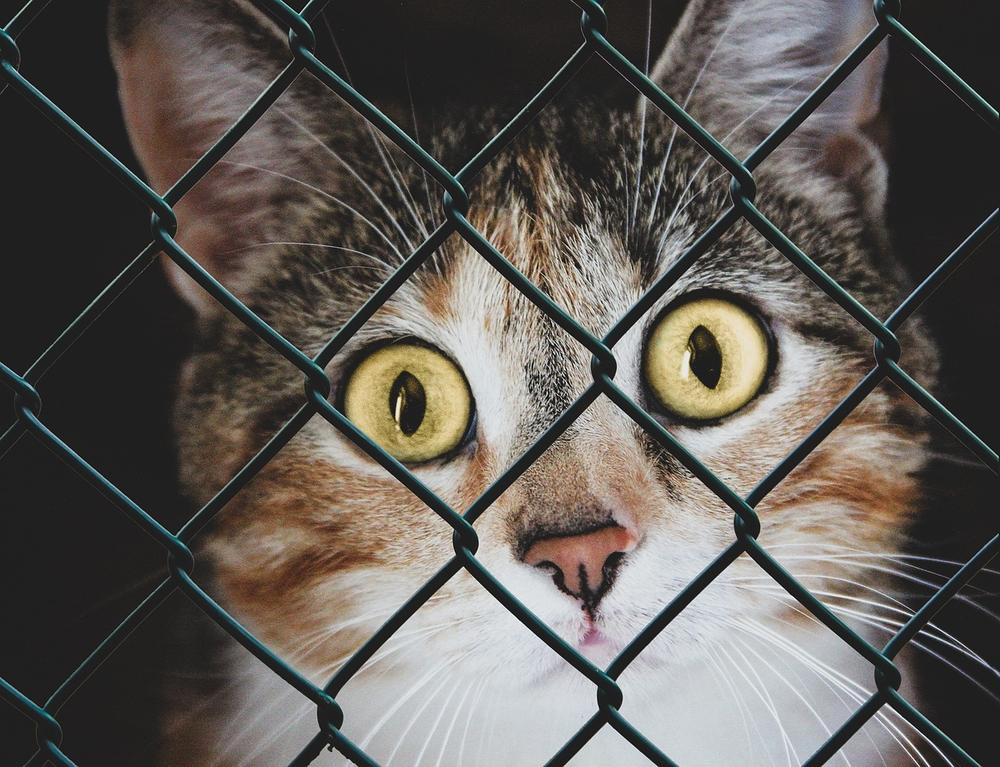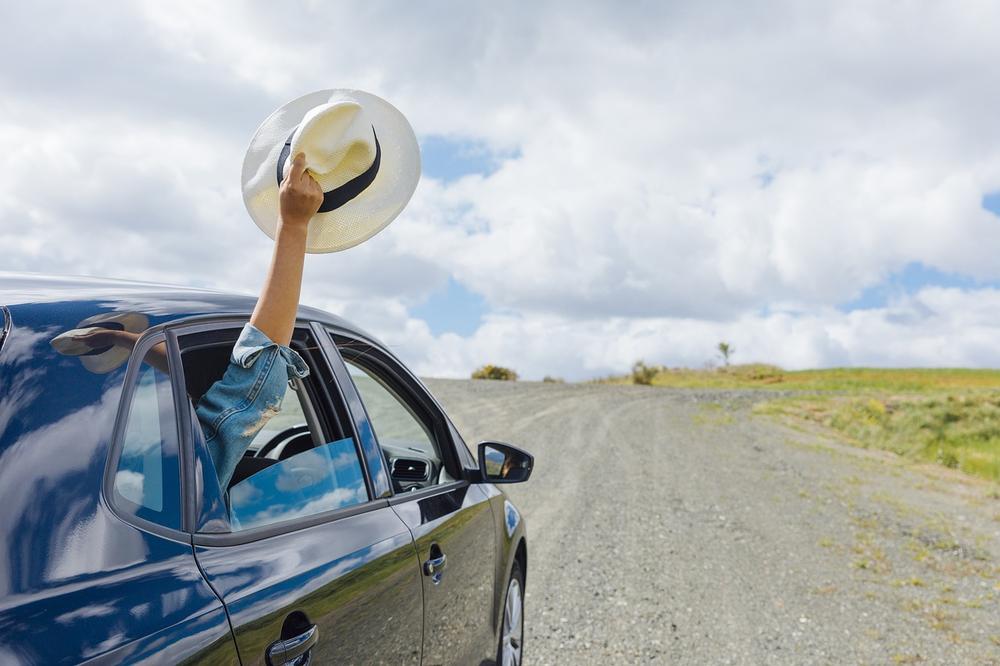Can a Cat Ride in a Car Without a Carrier? (Honest Answer)

Ever wondered if your kitty can ride shotgun without a carrier?
I get it, staring into those anxious eyes as they meow pitifully while you hop in the car is heart-wrenching.
What if they get hurt?
What if they escape through that blasted window?
Don't fret, my friend.
Today, I've got the answers you seek. 😺
This guide will give you the ultimate tips on traveling with your feline companion, sans carrier.
So buckle up, put your worries to rest, and let's hit the road together.
What Can You Use Instead of a Cat Carrier?
So, you want to transport your cat, but don't have a cat carrier?

Don't worry, there are alternatives!
- A sports backpack with mesh ventilation can be a secure and comfortable alternative to a cat carrier. It has padded straps for easy carrying and even a built-in leash attachment for added safety.
- If you're just heading to the vet, a duffel bag or backpack can work fine. Just make sure your cat is secured inside.
- Flying with your feline friend? You'll need a USDA-approved crate for that. It ensures their safety during the flight.
- Want something more casual? Consider using a sports bag or basket for car trips. Your cat will appreciate the extra space.
- For short car rides, a harness and leash can do the trick. Just make sure your cat is comfortable before hitting the road.
- On a tight budget? Create your own carrier using a cardboard box. Just be aware that it may not be as secure as other options.
No matter which option you choose, always prioritize your cat's safety. Supplies like collars with ID tags, microchips, food, water, bedding, and toys are essential for smooth travels.
And if you want to make future travel easier, use positive training techniques to help your cat feel more comfortable in their carrier.
Main points I'll expand upon further down this article:
- Cats should be properly restrained in a car for safety reasons.
- Using a cat carrier is essential for their security and well-being.
- Traveling with an unrestrained cat can have legal consequences.
- Unrestrained cats can cause distractions, accidents, and injuries.
- Vets strongly recommend using carriers or harnesses for car travel.
- Invest in a good-quality cat carrier for your furry friend's protection.
- Secure your cat properly in the car and control the temperature.
- Introduce your cat early and gradually to car travel to reduce anxiety.
- Use the right carrier and make it comfortable for your cat.
- Plan ahead and pack necessary items for the journey, including food and water.
And now let's discuss why you need to properly restrain your cat while traveling in a car, ensuring their safety and minimizing potential risks.
Why Your Cat Should Be Properly Restrained While Inside a Car?
Properly restraining your cat while driving is crucial for their safety and yours. Unrestrained cats can be distracting, cause accidents, and become anxious or aggressive. It's even considered animal cruelty in some states. Use a cat carrier or harness to ensure their well-being and avoid legal trouble.
Do I really need to restrain my cat when driving?
Let me tell you why it's crucial for your cat's safety and everyone else's.
When cats are unrestrained, they can be quite a handful.
You know how curious and mischievous they can be.
Can you imagine driving with a cat bouncing all over, pawing at your face, or trying to squeeze into tight spots?
Not only is it distracting, but it can cause accidents that put both you and your cat in danger.
And let's not forget about the stress.
Cats don't usually enjoy car rides, do they?
Being cooped up in a moving vehicle can make them anxious and unpredictable.
They may act out, become aggressive, or even get sick.
It's definitely an unpleasant experience for everyone involved.

But here's something vital to note.
In some states, traveling with an unrestrained cat can land you in legal trouble.
Yes, it's considered animal cruelty.
So, if you want to avoid any legal consequences, make sure your cat is properly restrained.
Now, what's the best way to keep your furry friend secure during car travel?
Veterinarians strongly recommend using a cat carrier or harness. These tools provide continuous security and minimize the risk of escape.
They also show that you value your cat as a member of the family, rather than just some random companion on a road trip.
By restraining your cat, you ensure their well-being, prevent distractions, avoid accidents, and stay clear of legal problems.
So do yourself and your cat a favor—keep them safe and sound on your car journeys.
But what if you rarely travel with your cat and don't own a carrier?
Is it really necessary to invest in one?
Well, let me tell you why prioritizing the use of a good-quality cat carrier is crucial for your furry friend's safety and protection!
Why Cat Owners Neglect Having Cat Carrier?
Don't neglect the importance of a cat carrier, even if you rarely travel with your feline companion.

Lack of transportation opportunities may make it tempting to forgo a cat carrier, but remember that its priority is the safety of your dear friend. Without a cat carrier, your furry buddy can easily escape, leading to dangerous situations you'd rather avoid.
Ensure your cat's protection by investing in a top-notch carrier.
Make their well-being your utmost concern, and don't compromise when it comes to the security and comfort of your adorable feline.
Think About Security
Here’s how you can ensure your cat stays safe and secure on car trips:
- Put your cat in the backseat.
- Check if there are airbags on the passenger seat.
- If there are airbags, put your cat in the backseat.
- If there are no airbags, it's okay for your cat to sit in the front passenger seat as long as they're the only one with you.
- If possible, ask a friend for a ride.
- Bring a first aid kit specifically for cats in case of emergencies.
- Keep the temperature inside the car comfortable and safe for your cat.
Now let's talk more about where to position your cat in the car:
To keep your cat safe during the journey, it's best to place them in the backseat.
The thing is, if your car has airbags in the passenger seat, deploying them could potentially harm your cat.
So it's safest to keep them away from the front.

But what if your car doesn't have airbags or you're the only one in the car?
In that situation, it's safe for your cat to be in the front passenger seat.
Just always remember to keep their safety as the top priority.
And don't forget to pack a first aid kit specifically for cats!
It's better to be prepared for any emergencies that might happen during the trip.
By following these steps, you'll ensure a secure and comfortable travel experience for your cat. 😺
Make Your Cat Used to the Car
To help your cat get used to riding in the car, here are 10 simple steps for you:
- Slowly introduce them to the carrier.
- Put their favorite bedding or treats inside.
- Let them explore it at their own pace.
- Gradually increase the time they spend in the carrier.
- Give them positive reinforcement when they're in there.
- Make sure they have a good association with the car.
- Start with short trips on public transport.
- Help them adjust to the travel environment.
- Use training techniques to make them comfortable.
- Have someone familiar hold them while in the car.
When you take your cat on car rides, you expose them to new things like sights, sounds, smells, and places.
This helps improve their all in all well-being and makes them more comfortable in different environments.
And finally, for those of you who are considering adopting a declawed cat, may I suggest taking a moment to read my highly informative blog post titled Should I Adopt a Declawed Cat.
In this article, I provide an in-depth analysis of the pros and cons associated with declawing cats.
It's important to make an informed decision when it comes to the well-being of our furry friends.
Tips in Using the Carrier to Transport Your Cat
When you need to take your cat on a trip, here's what you gotta do to make it easier for both of ya:
- Get the right carrier: You need one that's well-ventilated, sturdy, and roomy. Make sure your cat can turn around in there. Consider a top-loading carrier since it's easier to put your cat in and take them out.
- Make it cozy: Help your cat feel good in the carrier by making it comfy. Put their familiar bedding or something with your smell inside. Use treats and toys to encourage them to check out the carrier before you hit the road.
- Secure that carrier: Some carriers have safety loops for this very job. Attach those loops to your car seats so the carrier won't slide around during the ride. That way, your cat stays safe and sound.
- Keep it calm: Cats don't like loud noises or sudden movements. So, keep things quiet and chill during the journey. You can play soft music or even use a white noise machine to create a peaceful vibe.
- Take pit stops: Long trips can be overwhelming for cats. Plan regular breaks where your furry friend can stretch their legs, go potty in the litter box, and have a little snack or drink.
Your cat's comfort and safety always come first when you're taking them somewhere.

Just follow these tips, and your cat will have a less stressful and more fun journey with you.
What to Do if Your Cat Isn’t Used to Being in a Carrier or a Car?
Getting your cat accustomed to being in a carrier and traveling in a car takes time and patience. Here are some tips to help you out:
- Introduce the carrier gradually in a calm home environment. Let your cat explore it, leave treats inside, and even consider feeding them near the carrier to create positive associations.
- Incorporate short car rides into their routine. Start with short trips around the block and gradually increase the duration to get them used to being in a moving vehicle.
- Consider that indoor cats may not react well to car journeys, as they may be more sensitive to noise and unfamiliar surroundings. Take this into consideration and make the ride as comfortable as possible for them.
- Seek assistance from a family member or friend, especially if you have an aggressive cat. Having a second pair of hands can make things easier when getting them into the carrier.
- During the car ride, stop at rest areas to provide a calm environment. Offer treats and water to your cat, and give them breaks from the motion of the car.
- For longer trips, pack essential supplies such as food, water, treats, and a portable litter box. Being prepared will help ensure comfort and reduce stress for both you and your cat.
- Use waterproof bedding in the carrier. This can come in handy if your cat becomes frightened and has an accident during the journey.
- Stay calm and patient throughout the process. Your cat will pick up on your energy, so try to remain relaxed and reassuring.
With these tips, you can help your cat become more comfortable with traveling and make your car journeys together less stressful.
And that wraps up today's article.
Before you leave, can I ask you something? Did my blog post help you out? If it did, I would be incredibly grateful if you could share it with your friends and family. You can easily do so by clicking on one of the social media sharing icons. Thank you so much!
Talk soon,
-Sarah Davis